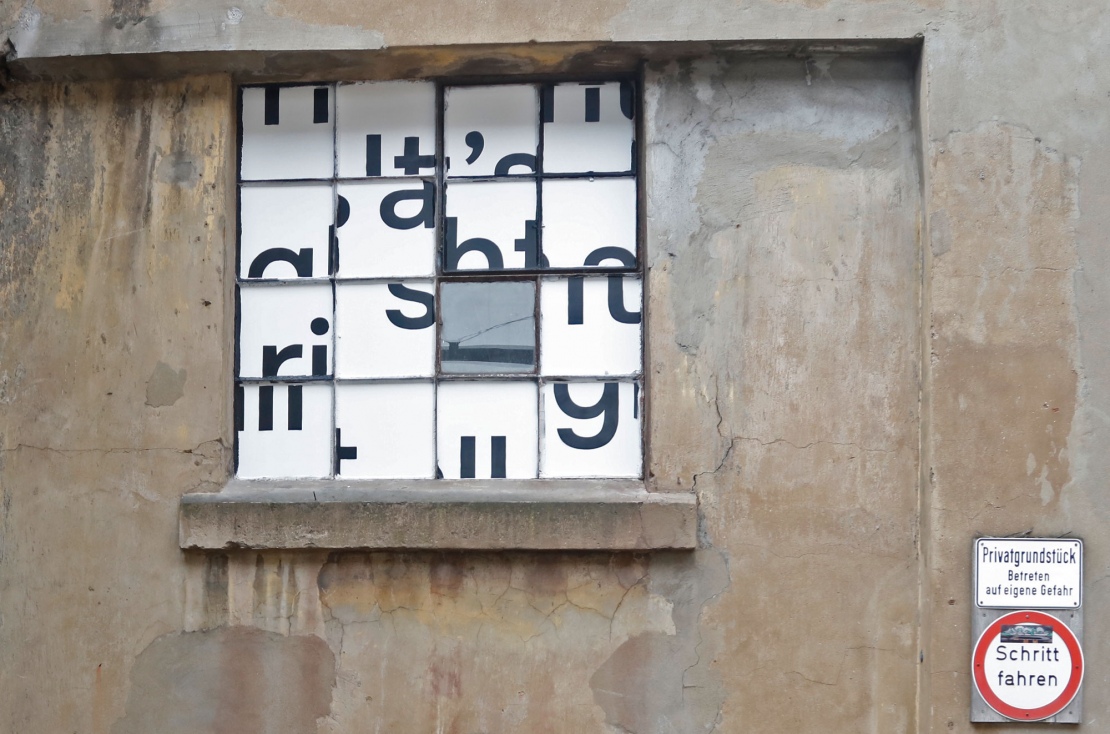Frukty
Website: www.instagram.com/fruktyvrukty/
Exhibitions
Works
Bilder-Wörterbuch

Frukty Hauswand dramatisch
Copyright: Weltkulturerbe Völklinger Hütte / Karl Heinrich Veith
Date
2022, in situ
Dimensions
7 x 8 m
Material
Acrylfarbe, Sprühlack
Description
During their research tours of the Völklingen Ironworks, the Russian artists' collective Frukty came across a booklet from the early 1940s in the Röchling exhibition that literally has it all. The title reads: "Picture dictionary for communication without language skills". Underneath is the note: "Trilingual edition: German-Russian-Ukrainian-Polish". This is a contemporary document of the German occupation in Eastern Europe during the Second World War, which was used at the Völklingen Ironworks to communicate with the forced labourers. In the centre of Völklingen, Frukty discovered a windowless house wall with a peeling façade, which seemed ideal for their work and which could be secured after discussions with the owner. The "picture dictionary" can now be found on the wall of the house, enlarged to gigantic proportions as a damaged trace of memory - with numerous missing parts, as if it had been there for decades but was still legible. Frukty's in-situ work brings a special piece of world history that took place in this region into the urban space and bears witness to a time when Russians, Ukrainians and Poles were victims together - namely of our ancestors in Germany.
The work is located in the street "Am Hüttenwerk" in Völklingen.
Ralf Beil
Bilder-Wörterbuch

Frukty Hauswand dramatisch
Copyright: Weltkulturerbe Völklinger Hütte / Karl Heinrich Veith
Date
2022, in situ
Dimensions
7 x 8 m
Material
Acrylic, spray paint
Description
The work is located in the street "Am Hüttenwerk" in Völklingen.
It's all right

Frukty Handwerkergasse
Copyright: Weltkulturerbe Völklinger Hütte / Karl Heinrich Veith
Date
2022, in situ
Dimensions
120 x 120 cm
Material
Paper, glas
Description
On the preexisting pattern of a sixteen-part, metal-frame window on the Handwerkergasse (Artisans’ Alley) of the Völklingen Ironworks, the Russian collective Frukty placed its in-situ work It’s all right in the form of a classic fifteen puzzle. Invented in the United States at the end of the nineteenth century, this puzzle has preoccupied both the human urge to play and to pursue mathematics ever since. Frukty has visually dissected the calming message of the title, “It’s all right,” according the principle of the game, resulting in disturbing unfamiliarity. Things have gotten mixed up here, and so the whole world situation in 2022 appears to be reflected in these inconspicuous window tiles. Frukty adopts a popular phenomenon in the form of this puzzle, connects it to the repurposing of the original site-specific architectural structures, and at the same time semantically and visually raises the question whether everything is truly all right, thereby demonstrating the collective’s masterly approach to the techniques of urban art. Nevertheless, it leaves open a question that can rarely be answered at first glance: Can the problem be solved at all? And if so, will everything them be “all right” (again)?